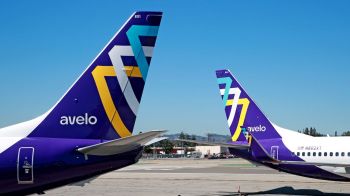More travelers taking the green route
TEXT OF STORY
KAI RYSSDAL:The heck with $4 gas and extra baggage charges. Memorial Day Weekend is almost upon us. Which means Americans are going to be taking to the roads and the skies in large numbers. But some of us are getting a little more green-minded about how we travel for vacation. The truly aware even calculate their carbon footprint. From the Marketplace Sustainability Desk, Christy George of Oregon Public Broadcasting reports.
CHRISTY GEORGE: The specter of melting ice and rising sea levels has some folks jetting off to see glaciers or low-lying islands before they’re gone.
Kim Solem is in charge of corporate social responsibility for the online travel company Expedia. She says some even combine eco-vacationing with helping the environment.
KIM SOLEM: Not to necessarily go back and lie on the beach anymore but to go see turtles nesting or to go do a Habitat for Humanity volunteer program.
Others are taking the opposite tack.
KIM STANLEY ROBINSON: Any trip I take by airplane puts a huge ding in my carbon footprint.
That’s science fiction writer Kim Stanley Robinson. He’s hiked Antarctica, the Alps and the Himalayas. But then he noticed that he could do the same thing closer to home, without polluting to get there.
ROBINSON: I began to realize I was always comparing them back to the Sierra Nevada, and always the Sierra Nevada was the best — all the other mountain ranges were too big or too cold or too dangerous or too filled with mosquitoes or one thing or another. I came to a little realization: Why keep going all over the world when you’ve got what you want right in your backyard?
These days, Robinson counts his carbon like calories and sticks close to his own backyard in Davis, California. Still, most people just keep on truckin’, says Kim Solem at Expedia.
SOLEM: The travel marketplace continues to grow.
She says Americans with a conscience tend in practice to take the trip and pay to offset their carbon. Now that people in developing countries have rising disposable incomes, they want to travel just like Americans do. That means flying. Even though cars emit more greenhouse gases, planes emit their gases at high altitudes where they pack a bigger punch. Clark Derry-Williams is an environmental economist with the Sightlines Institute in Seattle.
Clark Derry-WILLIAMS: When an airplane is flying high up in the sky, it’s putting certain kinds of emissions up in a place where they can really make a difference.
Commercial aircraft fly high to get above the weather and avoid turbulence, but that has minuses when it comes to contrails — those streaks of white that airplanes leave in the sky.
DERRY-WILLIAMS: Contrails, at some times of the year and certain altitudes, can turn into cirrus clouds, and those have a tendency to trap heat that otherwise would escape into space.
So, what do you do if you have a conscience but still want to see those glaciers before they melt? If you must fly, choose a middle seat on a packed plane. A full plane is more fuel-efficient and it’s going with or without you.
In Portland, Oregon, I’m Christy George for Marketplace.
There’s a lot happening in the world. Through it all, Marketplace is here for you.
You rely on Marketplace to break down the world’s events and tell you how it affects you in a fact-based, approachable way. We rely on your financial support to keep making that possible.
Your donation today powers the independent journalism that you rely on. For just $5/month, you can help sustain Marketplace so we can keep reporting on the things that matter to you.


















